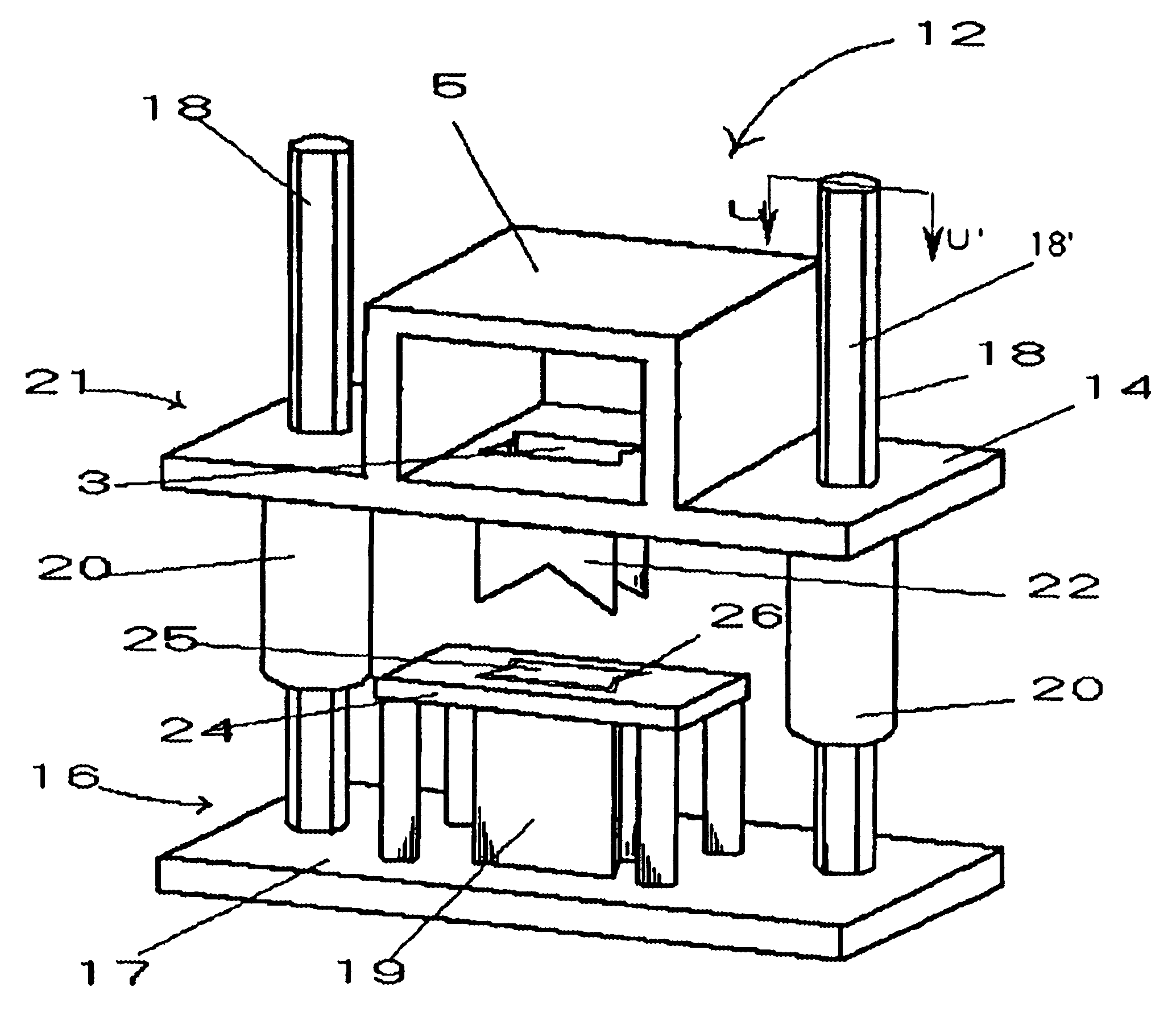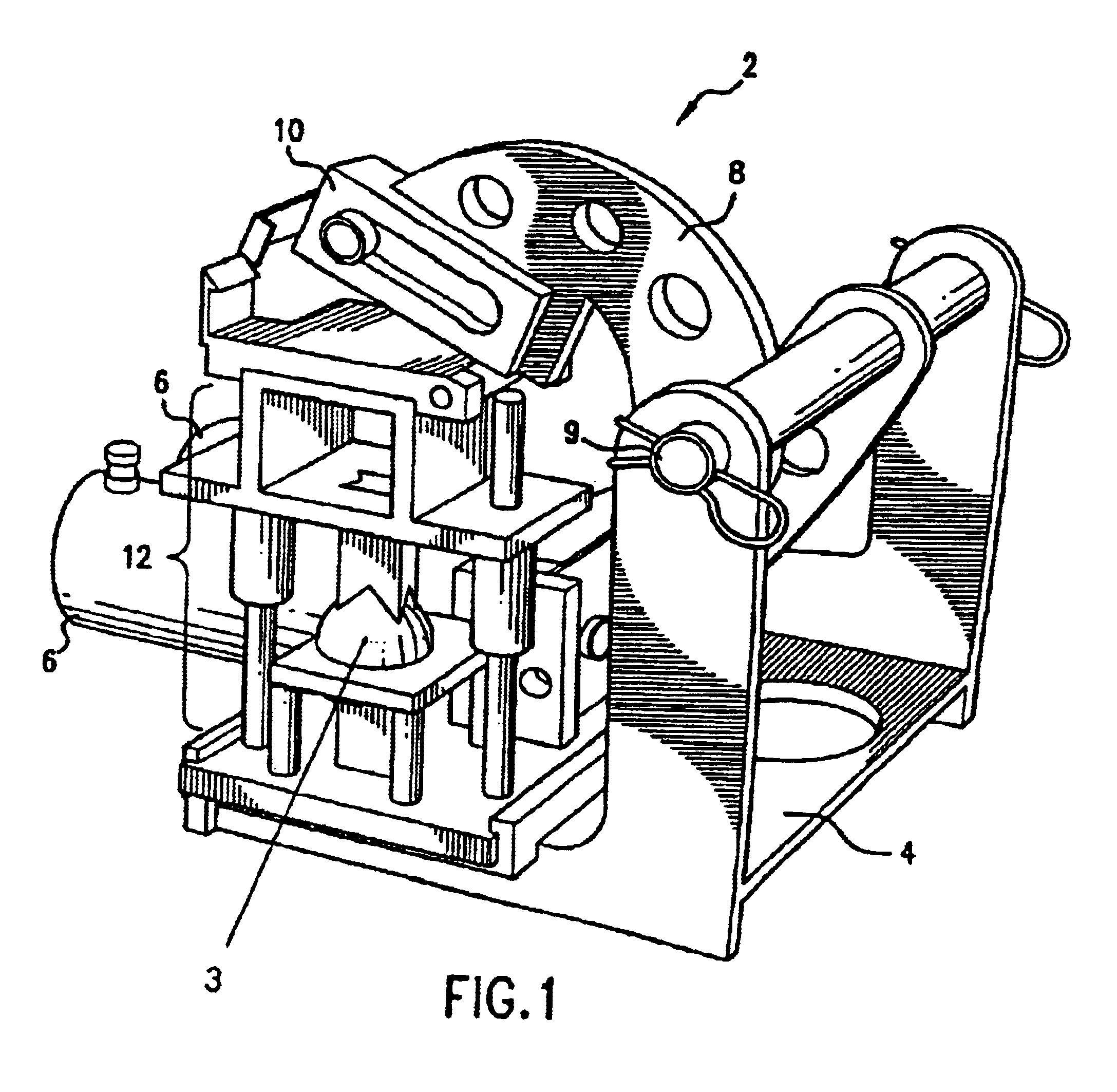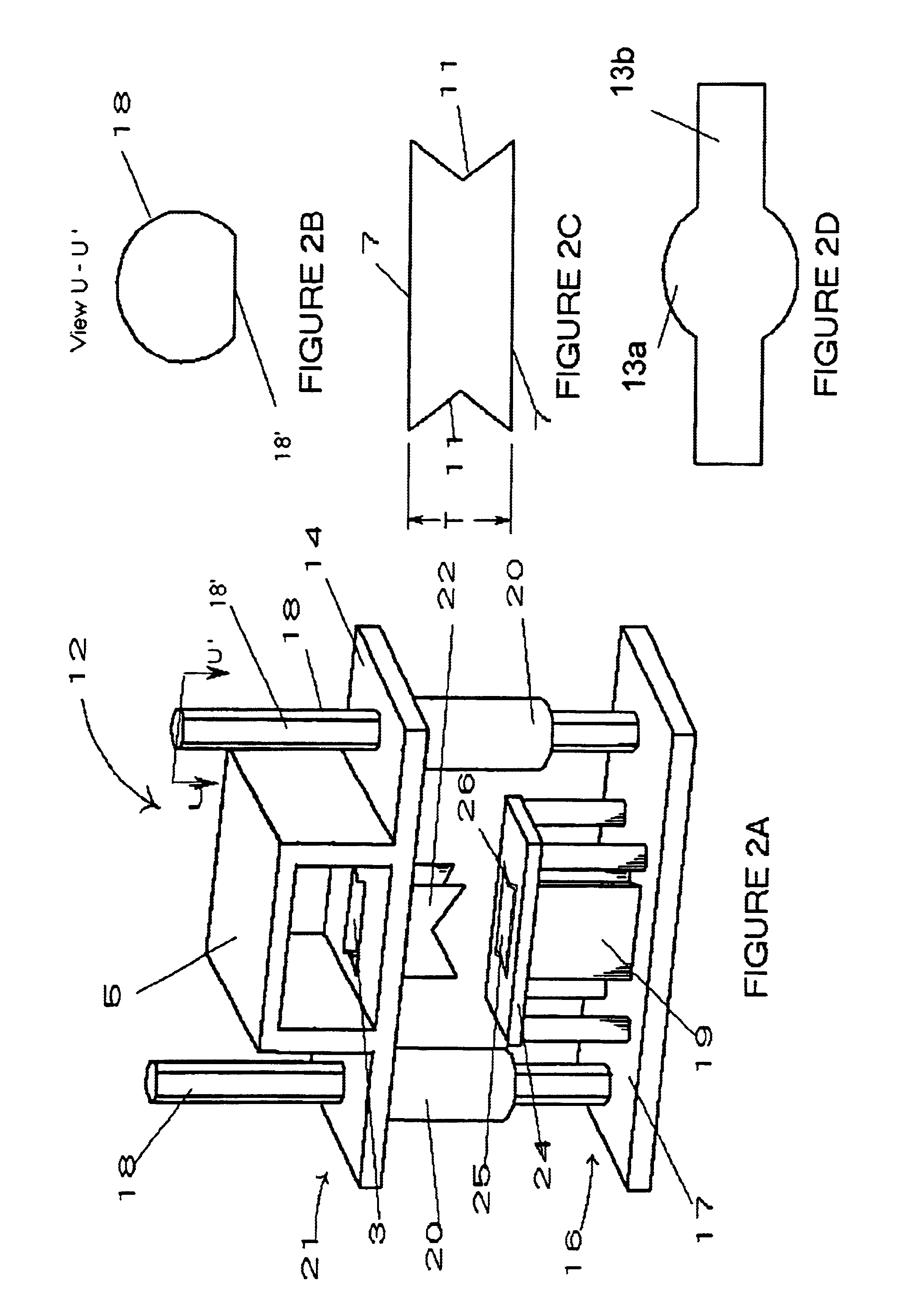Allograft implant cutting machine
- Summary
- Abstract
- Description
- Claims
- Application Information
AI Technical Summary
Benefits of technology
Problems solved by technology
Method used
Image
Examples
Embodiment Construction
[0115]The present invention is an apparatus for producing bone implants of various shapes and sizes. The production process consists of cutting the implants from human donor bone, also referred to herein as allograft bone.
[0116]The apparatus described herein is primarily intended for use in the rapid processing of harvested human donor bones. It provides a precision cut to standard sizes so as to provide the proper fit of the graft during surgical implantation.
[0117]The bone cutting apparatus of the present invention consists of a press and a series of cutting die sets in which special hollow cylindrical cutting blades are mounted in a way intended to allow the cutting blade to descend over a matchingly shaped but stationary and vertically oriented mandrel. The mandrel has a substantially flat top held in position by vertical support and is surrounded by a table with a top which has an opening matched in shape to the cross-section of the mandrel but with its perimeter displaced outw...
PUM
 Login to View More
Login to View More Abstract
Description
Claims
Application Information
 Login to View More
Login to View More - R&D
- Intellectual Property
- Life Sciences
- Materials
- Tech Scout
- Unparalleled Data Quality
- Higher Quality Content
- 60% Fewer Hallucinations
Browse by: Latest US Patents, China's latest patents, Technical Efficacy Thesaurus, Application Domain, Technology Topic, Popular Technical Reports.
© 2025 PatSnap. All rights reserved.Legal|Privacy policy|Modern Slavery Act Transparency Statement|Sitemap|About US| Contact US: help@patsnap.com



